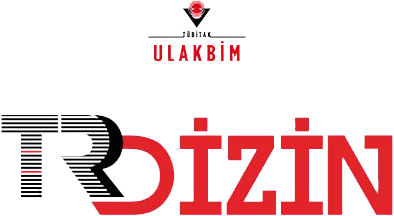
Bu eser Creative Commons Alıntı-GayriTicari-Türetilemez 4.0 Uluslararası Lisansı ile lisanslanmıştır.













Türkiye'de sunulan ilk vaka; Immunocompetent hasta daChaetomium globosum türünün etken olduğu tırnak onikomikozu.
Fatma Özakkaş, Rabiye Altınbaş, Hafize Sav, Mert Ahmet Kuşkucu, Kenan Midilli, Nuri KirazIstanbul Universitesi, Cerrahpaşa Tıp Fakültesi Mikrobiyoloji Anabilim Dalı İstanbulBu olguda 25 yaşında kadın hastanın sağ ayak başparmağındaki distal subungual onikomikoz rapor olarak sunuldu. Tırnak muayenesi laboratuarımızda yapıldı ve hastada distal subungual onikomikoz saptandı. % 20 KOH kullanılarak yapılan hastanın direkt mikroskobik incelenmesinde septalı hifler gözlemlendi. Hastadan alınan tırnak örnekleri siklohegzimitli ve siklohekzimitsiz Sabouraud's dextrose agara ekildi ve 25 derecede bir hafta beklenildi.Fungal büyüme saptandıktan sonra direkt preperat hazırlandı, kahverengi septalı hifler, perithecia,limon benzeri askosporlar görüldü.Etken sekanslama ve konvansiyonel yöntemle Chaetomium globosum olarak tanımlandı. CLSI M38-A2 yöntemi kullanılarak amfotericin B, fluconazole, itracanozole, miconazole, ketoconazole, flucytosine voriconazole MIK değerleri sırasıyala 4, >64, 1, 0.125,0.125, >64, 0,5 μg/ml olarak belirlendi. Chaetomium globosum için fluorocytosine ve fluconazole dirençli olarak saptanırken miconazole ve ketoconazole MIK değerleri en iyi olarak saptandı. Hasta günlük (250 mg /a gün) oral itraconazole ve amorolfin % 5 tırnak cilası kullandı ve 12 hafta da iyileşme kayıt edildi.
Anahtar Kelimeler: Chaetomium, onikomikoz, Antifungal duyarlılık
The first Turkish case of onychomycosis caused by Chaetomium globosum in an immunocompetent patient
Fatma Özakkaş, Rabiye Altınbaş, Hafize Sav, Mert Ahmet Kuşkucu, Kenan Midilli, Nuri KirazIstanbul University, Cerrahpasa Medical Faculty, Department Of Microbiology, IstanbulWe report a case of distal subungual onychomycosis of the thumb of the right foot of a 25-year-old female. Nail examination was examined in our laboratory and distal subungual onycomycosis was detected. In direct microbiological examination septate hyphae was observed by using % 20 KOH. Scraping of nail was cultured on two Sabouraud's dextrose agar with cycloheximide and without cycloheximide slants at 25C˚ for one week. Growth of colony was observed in without cycloheximide slants. The same brown colonies were produced on repeated cultures by using Sabouraud's dextrose agar without cycloheximide. After growth of colony, slide cultures were prepared and brown-colored septated hyphae, perithecia, lemon- shaped ascospores were observed by light microscopy. The causative agent was identified as Chaetomium globosum based on DNA sequencing and mycological examination. Using CLSI M38-A2 microdilution method, minimum inhibitory concentration values of amfotericin B, fluconazole, itracanozole, miconazole, ketoconazole, flucytosine voriconazole were determined as 4, >64, 1, 0.125,0.125, >64, 0,5 μg/ml respectively. Fluorocytosine and fluconazole were determined as resistant for Chaetomium globosum and the best effective antifungal was determined as miconazole and ketoconazole. The patient was treated by using oral itraconazole (250 mg /a day) and local application of amorolfine 5% nail lacquer for 12 weeks.
Keywords: Chaetomium, Onychomycosis, Antifungal susceptibiltiy
Makale Dili: İngilizce
(2057 kere indirildi)


